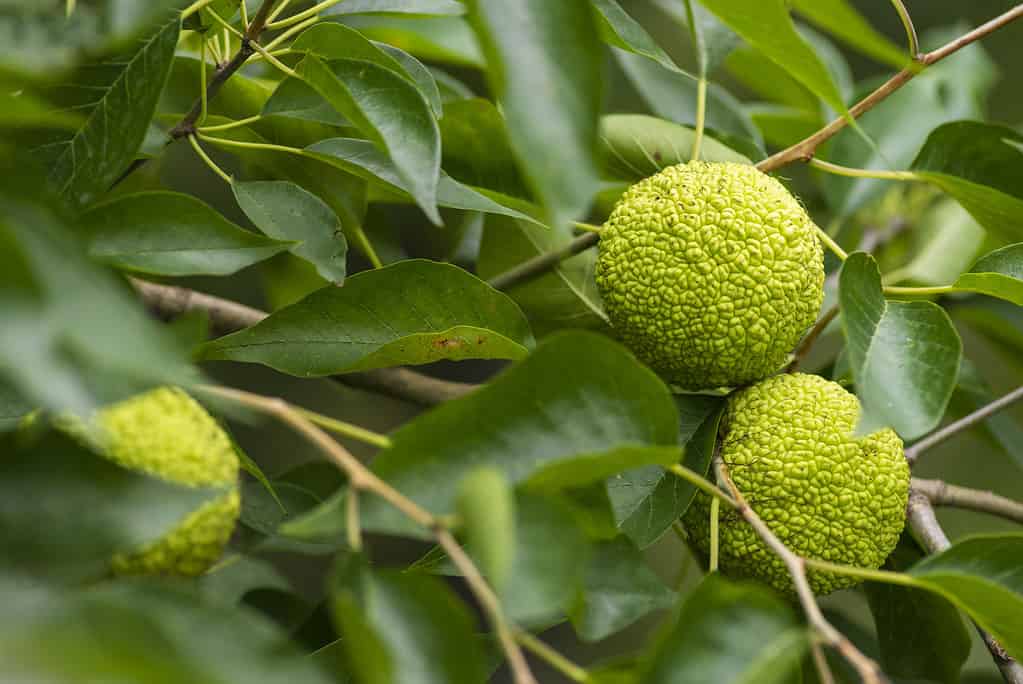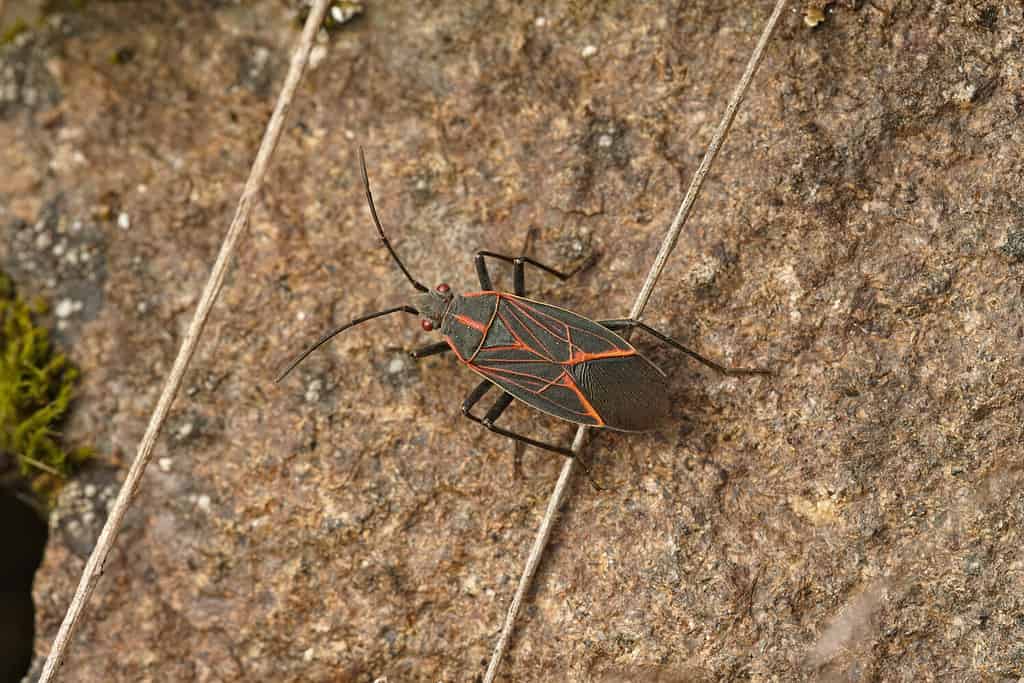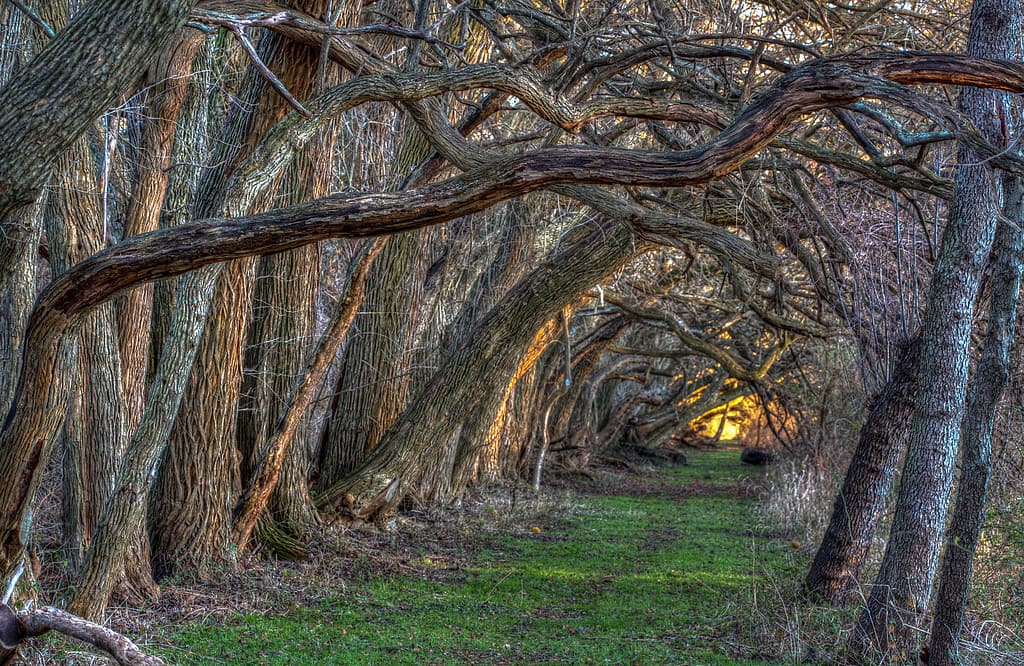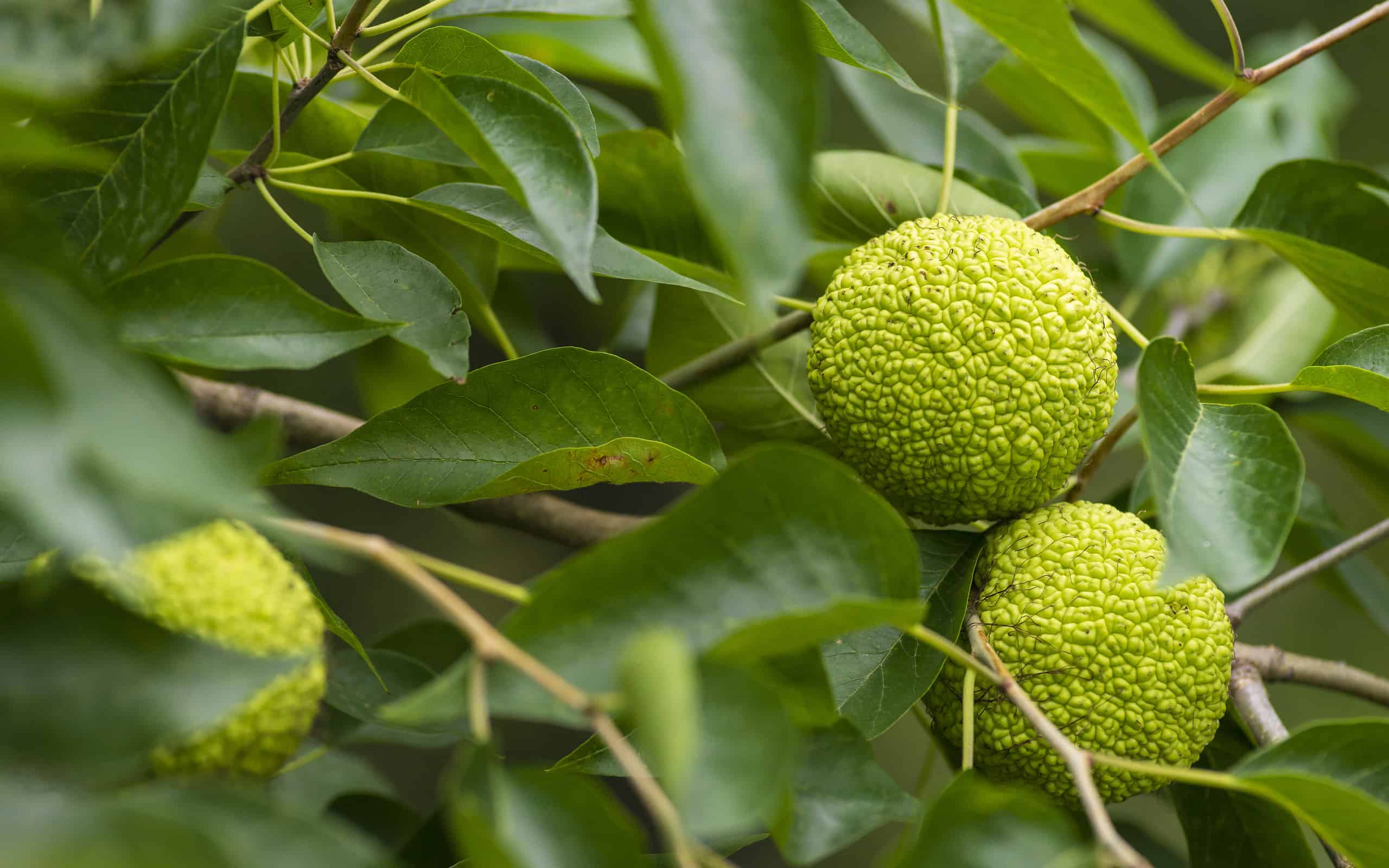A native tree to the river valleys of Arkansas, Texas, Oklahoma, and Louisiana, the Osage orange (Maclura pomifera) also grows in many states east of the Mississippi River. This tree produces a unique, yellow-green, softball-sized fruit commonly referred to as the hedge apple. These hedge apples have a rough, hard surface with a strange, brainlike appearance.
Prior to European contact, Osage oranges had a limited range in the Southern part of the United States. Thanks to human intervention, these trees are now present in all 48 contiguous U.S. states and southeastern Canada. In most of these areas, a persistent myth says that hedge apples keep pests away if kept near your home. Discover the true story behind this myth and whether hedge apples really do keep pests away.
What Is A Hedge Apple?

Other names for the hedge apple include monkey brains,
horse
apples, and mock oranges.
©Victoria Moloman/iStock via Getty Images
The term hedge apple is a common name for the fruit of the Osage orange (Maclura pomifera). The term hedge apple likely refers to farmers’ popular use of Osage orange trees as hedgerows before the invention of barbed wire. The name Osage orange might get a portion of its name due to its orange bark, its fruit’s resemblance to orange fruit, or the strange scent it gives off. ‘Osage’ comes from the Native American tribe that lived in the tree’s native region.
Osage orange trees grow about 30 to 40 feet tall and have sturdy wood. Its branches grow upward in an arching manner, which makes it a good tree for hedgerows. In the past, Native Americans used the wood from this tree to make strong bows, giving it the French name bois d’arc or “bow wood”. The rot-resistant wood may be the result of 2,3,4,5-tetrahydroxystilbene, an anti-fungal substance.
Osage orange trees themselves have stiff spines that poke out of their leaf axils. These thorny protrusions can make it difficult to come close or get around when the tree is planted in a wooded area.
Can Hedge Apples Keep Pests Away?

Many people in the Midwestern U.S. say that placing hedge apples around foundations, basements, and cupboards alleviates pest problems.
©HWall/Shutterstock.com
The old tale about hedge apples keeping pests away will not seem to go away. People commonly recommend placing hedge apples around your home’s foundation to repel crickets, spiders, cockroaches, boxelder bugs, and other insects.
However, no scientific studies back up any of these claims. Researchers studied whether a concentrated oil made with hedge apples deters insects. While the concentrated oil seemed to work well to keep insects away, the oil found in a single hedge apple does not have a high concentration. Evidence suggests that non-insect pests, like spiders, subsist on or near the tree and fruit.
So, when it comes to using hedge apples to keep pests away, do not go out of your way to get them. If you have a tree on your property, you can collect a few to put near your home. However, buying hedge apples for use as insect repellants may be a waste of money.

Sliced or broken open hedge apples stand a slightly better chance of repelling some types of pests.
©Agnieszka Kwiecień / Nova, CC BY-SA 4.0 – Original / License
What Can I Use Hedge Apples For?
The actual fruit from an Osage orange tree has very few uses. Most animals dislike the strong, unpleasant taste of the latex sap, and only desperate creatures without a lot of options will choose to dine on fallen hedge apples. Of course, fox squirrels and chipmunks have been seen tearing apart the fruit to eat the seeds inside. In general, this fruit is not palatable for all living creatures and is not recommended for human consumption in any form.

Osage orange trees grow quickly and adapt to almost any conditions, making them an ideal living hedge.
©Mark Dignen/iStock via Getty Images
The tree itself has more utility, being a sturdy, fast-growing option for hedges. Early North American European farmers could create hedgerows from the tree’s dense growth. Branches grow very low on the tree, which creates a natural barrier with its thorny leaves. The Osage orange tree remained popular as a living fence until the creation of barbed wire. For a time in the 1930s, the Works Progress Administration (WPA) also planted these trees to prevent soil erosion.
Osage orange trees drop their mature fruit in September and October. Some people enjoy collecting the fruit for use as decor in and around the home for the autumn season.
Are Hedge Apples Poisonous?
No, hedge apples are not poisonous to humans or any other animal despite being generally inedible. In the past, stories abounded of hedge apples being bad for livestock to eat. However, the truth might be that the large fruit easily gets stuck in the esophagus of animals like cows, which prevents the release of gases. But most livestock will ignore fallen hedge apples, making it a minor concern for modern-day farmers.
One study indicates that hedge apples might contain a substance that irritates the skin. People touching the fruit’s inner milky sap sometimes have a slight allergic reaction.
Thank you for reading! Have some feedback for us? Contact the AZ Animals editorial team.








